
Majestic Wonders of Teide National Park
Explore Teide National Park: A UNESCO World Heritage Site with stunning volcanic landscapes, diverse flora and fauna, and one of the world's best stargazing locations.
Teide National Park, located on the island of Tenerife in Spain, is a natural marvel that captivates visitors with its otherworldly landscapes and breathtaking vistas. At the heart of the park stands Mount Teide, the highest peak in Spain and a dormant volcano that dominates the skyline. The park is a UNESCO World Heritage Site and offers an array of unique geological formations, including ancient lava flows, craters, and volcanic cones. Teide National Park is a haven for outdoor enthusiasts, offering numerous hiking trails that range from easy walks to challenging climbs. The Roques de García, a series of striking rock formations, are a must-see and provide excellent photo opportunities. The park is also home to a diverse array of flora and fauna, some of which are unique to the Canary Islands. Visitors can explore the rich biodiversity while enjoying the crisp, clean air and stunning natural beauty. One of the most spectacular experiences in Teide National Park is the opportunity to take a cable car ride to the summit of Mount Teide. From the top, you can enjoy panoramic views of the island and, on a clear day, even spot other Canary Islands in the distance. For stargazing enthusiasts, Teide National Park is one of the best places in the world to observe the night sky, thanks to its high altitude and low light pollution. The park regularly hosts guided stargazing tours, offering a chance to marvel at the celestial wonders above.
Local tips in Teide National Park
- Visit early in the morning or late afternoon to avoid crowds and enjoy cooler temperatures.
- Wear sturdy hiking boots and bring plenty of water, as the terrain can be rough and the climate dry.
- Check the weather forecast before heading to the park, as conditions can change rapidly.
- Book the cable car tickets in advance, especially during peak tourist seasons.
- Take advantage of the park's guided tours to learn more about its geology, history, and ecology.
- Don't forget your camera! The landscapes are incredibly photogenic.
Majestic Wonders of Teide National Park
Teide National Park, located on the island of Tenerife in Spain, is a natural marvel that captivates visitors with its otherworldly landscapes and breathtaking vistas. At the heart of the park stands Mount Teide, the highest peak in Spain and a dormant volcano that dominates the skyline. The park is a UNESCO World Heritage Site and offers an array of unique geological formations, including ancient lava flows, craters, and volcanic cones. Teide National Park is a haven for outdoor enthusiasts, offering numerous hiking trails that range from easy walks to challenging climbs. The Roques de García, a series of striking rock formations, are a must-see and provide excellent photo opportunities. The park is also home to a diverse array of flora and fauna, some of which are unique to the Canary Islands. Visitors can explore the rich biodiversity while enjoying the crisp, clean air and stunning natural beauty. One of the most spectacular experiences in Teide National Park is the opportunity to take a cable car ride to the summit of Mount Teide. From the top, you can enjoy panoramic views of the island and, on a clear day, even spot other Canary Islands in the distance. For stargazing enthusiasts, Teide National Park is one of the best places in the world to observe the night sky, thanks to its high altitude and low light pollution. The park regularly hosts guided stargazing tours, offering a chance to marvel at the celestial wonders above.
When is the best time to go to Teide National Park?
Iconic landmarks you can’t miss
Caldera de Taburiente National Park
Explore the stunning landscapes and diverse wildlife of Caldera de Taburiente National Park, a must-visit destination for outdoor enthusiasts in Tenerife.
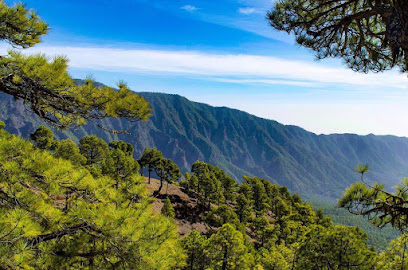
Observatorio Astrofísico
Experience the cosmos at the Observatorio Astrofísico in Santa Cruz de Tenerife, a premier destination for astronomy enthusiasts with breathtaking views and stellar observations.

Mirador del Espigón del Roque
Discover the stunning landscapes of La Palma at Mirador del Espigón del Roque, a must-visit viewpoint showcasing the island's natural beauty.
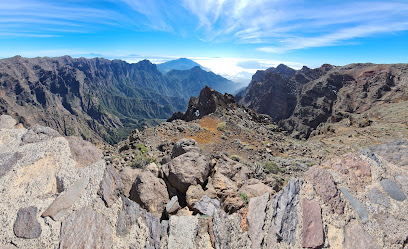
Torre del Time
Discover Torre del Time: An iconic observation deck in La Palma offering breathtaking views of nature's splendor and captivating landscapes.
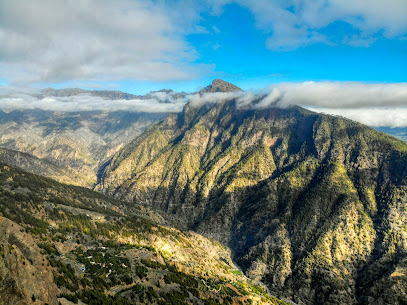
Unmissable attractions to see
Observatorio Astrofísico
Discover the wonders of the universe at the Observatorio Astrofísico in Santa Cruz de Tenerife, a top destination for astronomy enthusiasts.
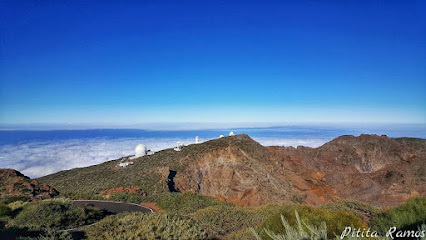
Mirador de Los Andenes
Discover the breathtaking views at Mirador de Los Andenes, a scenic spot in Santa Cruz de Tenerife, perfect for nature lovers and photographers.
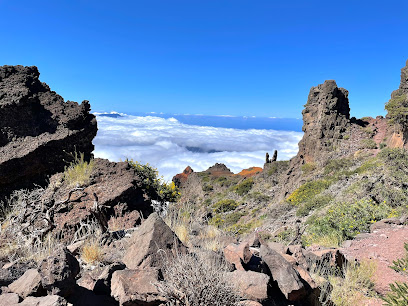
Ingenieros Park
Explore Ingenieros Park in Madrid, a tranquil oasis offering lush greenery, walking paths, and a perfect retreat for relaxation and leisure activities.

Mirador Lomo de las Chozas
Discover the stunning vistas of Mirador Lomo de las Chozas, a must-visit observation deck in El Paso, Tenerife, perfect for nature lovers and photographers.
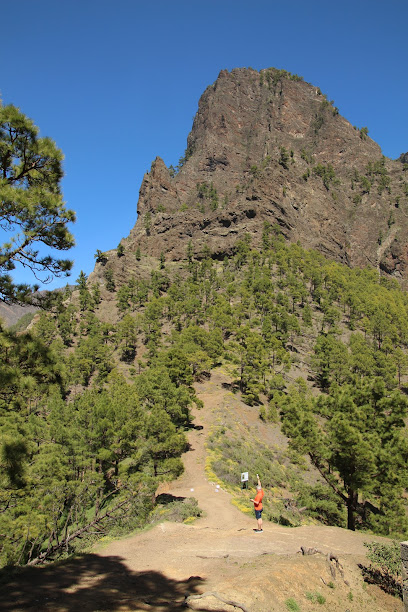
Pico de La Nieve
Explore the breathtaking heights of Pico de La Nieve, a stunning natural landmark in Santa Cruz de La Palma boasting spectacular views and unforgettable hiking trails.
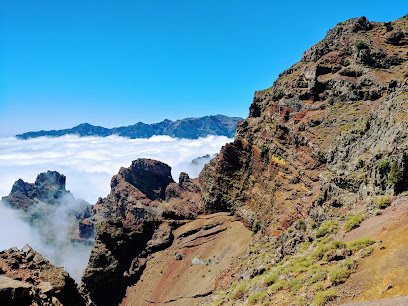
Mirador del Espigón del Roque
Discover the stunning vistas of Mirador del Espigón del Roque in El Paso, Santa Cruz de Tenerife, a must-see destination for nature lovers and photographers.
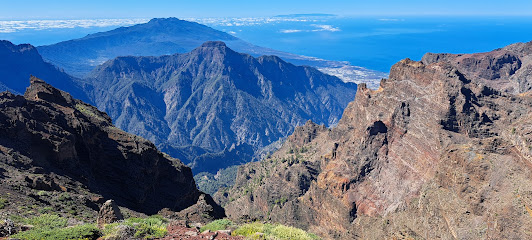
Torre del Time
Discover the stunning vistas of La Palma at Torre del Time, an observation deck offering breathtaking panoramic views of the island's natural beauty.
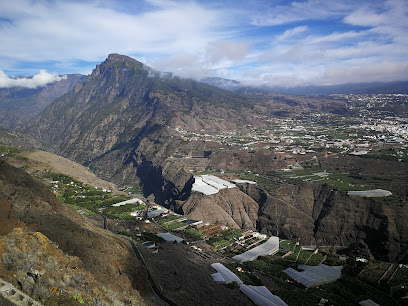
Mirador de Los Roques
Experience the breathtaking vistas of Caldera de Taburiente at Mirador de Los Roques, a serene observation deck in Santa Cruz de Tenerife.
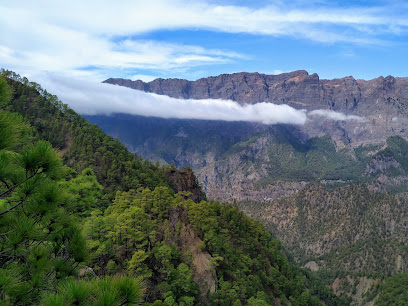
Essential bars & hidden hideouts
Teide Bar Cafeteria
Experience the local charm at Teide Bar Cafeteria, a cozy spot in Alcalá de Henares serving delightful drinks and a warm ambiance.
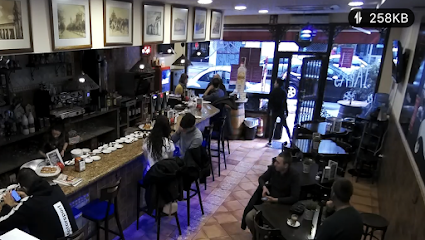
Cafeteria Teide
Discover Cafeteria Teide in Loeches, where cozy ambiance meets delicious coffee and delightful snacks in the heart of Madrid.
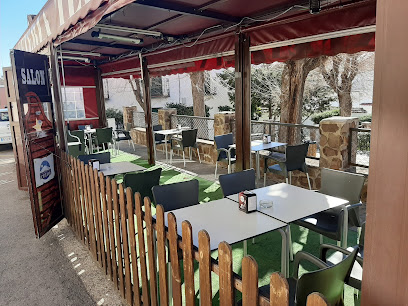
Bar Teide
Discover Bar Teide: A cozy bar in Segovia offering local drinks and a friendly atmosphere ideal for tourists seeking relaxation.
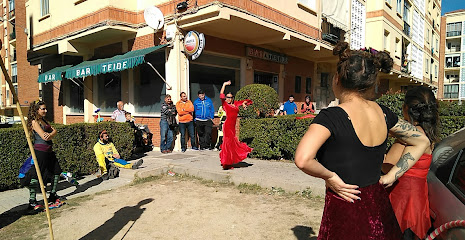
Local Phrases about Teide National Park
-
- HelloHola
[oh-lah] - GoodbyeAdiós
[ah-dee-ohs] - YesSí
[see] - NoNo
[noh] - Please/You're welcomePor favor
[pohr fah-vohr] - Thank youGracias
[grah-thyahs] - Excuse me/SorryPerdón
[pehr-dohn] - How are you?¿Cómo estás?
[koh-moh ehs-tahs] - Fine. And you?Bien. ¿Y tú?
[byehn. ee too] - Do you speak English?¿Hablas inglés?
[ah-blahs een-glehs] - I don't understandNo entiendo
[noh ehn-tee-ehn-doh]
- HelloHola
-
- I'd like to see the menu, pleaseMe gustaría ver el menú, por favor
[meh goos-tah-ree-ah behr ehl meh-noo, pohr fah-vohr] - I don't eat meatNo como carne
[noh koh-moh kahr-neh] - Cheers!¡Salud!
[sah-lood] - I would like to pay, pleaseMe gustaría pagar, por favor
[meh goos-tah-ree-ah pah-gahr, pohr fah-vohr]
- I'd like to see the menu, pleaseMe gustaría ver el menú, por favor
-
- Help!¡Ayuda!
[ah-yoo-dah] - Go away!¡Vete!
[veh-teh] - Call the Police!¡Llama a la policía!
[yah-mah ah lah poh-lee-see-ah] - Call a doctor!¡Llama a un médico!
[yah-mah ah oon meh-dee-koh] - I'm lostEstoy perdido
[ehs-toy pehr-dee-doh] - I'm illEstoy enfermo
[ehs-toy ehn-fehr-moh]
- Help!¡Ayuda!
-
- I'd like to buy...Me gustaría comprar...
[meh goos-tah-ree-ah kohm-prahr] - I'm just lookingSolo estoy mirando
[soh-loh ehs-toy meer-ahn-doh] - How much is it?¿Cuánto cuesta?
[kwan-toh kwehs-tah] - That's too expensiveEso es demasiado caro
[eh-soh ehs deh-mah-see-ah-doh kah-roh] - Can you lower the price?¿Puedes bajar el precio?
[pweh-dehs bah-hahr ehl pree-syoh]
- I'd like to buy...Me gustaría comprar...
-
- What time is it?¿Qué hora es?
[keh oh-rah ehs] - It's one o'clockEs la una
[ehs lah oo-nah] - Half past (10)Media (10)
[meh-dee-ah (deh-eez)] - MorningMañana
[mah-nyah-nah] - AfternoonTarde
[tahr-deh] - EveningNoche
[noh-cheh] - YesterdayAyer
[ah-yehr] - TodayHoy
[oy] - TomorrowMañana
[mah-nyah-nah] - 1Uno
[oo-noh] - 2Dos
[dohs] - 3Tres
[trehs] - 4Cuatro
[kwa-troh] - 5Cinco
[theen-koh] - 6Seis
[says] - 7Siete
[syeh-teh] - 8Ocho
[oh-choh] - 9Nueve
[nweh-veh] - 10Diez
[dyehth]
- What time is it?¿Qué hora es?
-
- Where's a/the...?¿Dónde está...?
[dohn-deh ehs-tah] - What's the address?¿Cuál es la dirección?
[kwal ehs lah dee-rehk-syohn] - Can you show me (on the map)?¿Puedes mostrarme (en el mapa)?
[pweh-dehs mohs-trar-meh (ehn ehl mah-pah)] - When's the next (bus)?¿Cuándo es el próximo (autobús)?
[kwan-doh ehs ehl prohk-see-moh (ow-toh-boos)] - A ticket (to ....)Un billete (a ....)
[oon bee-yeh-teh (ah)]
- Where's a/the...?¿Dónde está...?
History of Teide National Park
-
Mount Teide, the crowning feature of Teide National Park, is a stratovolcano that formed approximately 170,000 years ago. Its formation is linked to the volcanic activity that has shaped the Canary Islands over millions of years. This colossal peak, standing at 3,718 meters, is the highest point in Spain and the third highest volcano on a volcanic ocean island in the world.
-
The Guanches, the aboriginal inhabitants of Tenerife, regarded Mount Teide as a sacred mountain. They believed it was the dwelling place of the god Guayota, whom they considered the embodiment of evil. According to Guanche mythology, Guayota kidnapped the sun god Magec and imprisoned him within the volcano, plunging the world into darkness. The Guanches would offer sacrifices to appease the gods and ensure the sun's release.
-
The first known European to set foot on Tenerife was the Portuguese explorer Diogo de Silves in 1427. However, it wasn't until the late 15th century that the island was fully explored and claimed by the Spanish Crown. In 1496, Alonso Fernández de Lugo completed the conquest of Tenerife, integrating it into the Kingdom of Castile. The imposing presence of Mount Teide was noted by early explorers and chroniclers during this period.
-
Mount Teide has long been a subject of scientific interest. One of the most significant expeditions was led by the German naturalist Alexander von Humboldt in 1799. Humboldt's observations of the volcanic landscape and endemic flora laid the groundwork for modern volcanology and biogeography. His descriptions of the Teide region were instrumental in promoting scientific exploration of the Canary Islands.
-
Teide National Park was established on January 22, 1954, to protect its unique geological formations and diverse ecosystems. It was one of the first national parks in Spain and covers an area of 18,990 hectares. The park showcases a variety of volcanic features, including lava flows, volcanic cones, and calderas. It was declared a UNESCO World Heritage Site in 2007, recognizing its global significance.
-
Today, Teide National Park is a major cultural and tourist destination, attracting millions of visitors annually. The park offers a range of activities, from hiking and stargazing to cable car rides that provide stunning views of the volcanic landscape. The annual pilgrimage to the shrine of Our Lady of the Snows, located within the park, reflects its enduring cultural importance to the local population.
Teide National Park Essentials
-
Teide National Park is located on the island of Tenerife in the Canary Islands, Spain. The nearest airport is Tenerife South Airport (TFS), approximately 60 kilometers away. From the airport, you can rent a car, take a taxi, or use public transportation to reach the park. There are also organized tours that include transportation from major tourist areas in Tenerife.
-
Within Teide National Park, the most convenient way to get around is by car. There are well-maintained roads and parking areas near major attractions. Alternatively, you can use the public bus service (TITSA) which has routes passing through the park. For a more immersive experience, consider hiking or biking along the numerous trails available in the park.
-
The official currency in Spain is the Euro (EUR). Credit cards are widely accepted at hotels, restaurants, and shops within and around Teide National Park. However, it’s advisable to carry some cash, especially for smaller establishments and in more remote areas. ATMs are available in nearby towns like Vilaflor and La Orotava.
-
Teide National Park is generally safe for tourists. However, standard precautions should be taken. Avoid leaving valuables in your car and be cautious of your belongings in crowded areas. The park itself is very secure, but always stay on marked trails to avoid getting lost or injured. There are no specific high-crime areas targeting tourists within the park.
-
In case of an emergency, dial 112 for immediate assistance. There are emergency phones located at various points within the park. It is advisable to carry a basic first aid kit and have travel insurance that covers medical emergencies. For minor health issues, pharmacies are available in nearby towns such as Vilaflor and La Orotava.
-
Fashion: Do wear comfortable and weather-appropriate clothing, especially good hiking shoes. Avoid wearing flip-flops or sandals on hiking trails. Religion: Do show respect if visiting religious sites nearby; modest clothing is recommended. Public Transport: Do respect other passengers and keep noise levels down. Don't eat or drink on buses. Greetings: Do greet people with a polite 'Hola' or 'Buenos días'. Eating & Drinking: Do try local Canarian dishes and wines. Don't leave food waste behind; always use trash bins.
-
To experience Teide National Park like a local, visit during the early morning or late afternoon to avoid the crowds and enjoy the tranquility. Engage with park rangers who can provide valuable insights and tips. Don't miss the chance to take the cable car to the upper station for stunning views, and if you’re fit enough, consider obtaining a permit to hike to the summit of Mount Teide. Also, try the local honey rum (Ron Miel) as a unique Canarian treat.











